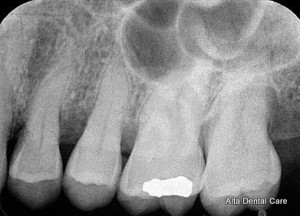Gingivitis, although seemingly unimportant to most people, is a condition that you cannot just ignore because the condition can lead to all kinds of problems for a patient. Some people are only concerned about the health of their teeth; they fail to give their gums the proper care it deserves. They think that dental health is only about the teeth, so they forget the other structures of the oral cavity. By being this careless, you compromise the health of your gums and bone that stabilizes your teeth in the bone.
Gingivitis, like most dental diseases progresses gradually. It is a reversible condition that can easily be reverted, just as long as it is spotted right away and addressed effectively. One way that you can turn things around is to know more about the onset and progression of Gingivitis.
Plaque Accumulation: Plaque accumulates on a daily basis. Plaque is formed when saliva, bacteria and sugar combines. If a person’s personal efforts at home is not good enough to rid the mouth of adherent plaque, plaque will build-up and calcify. As plaque continues to calcify, it hardens and settles into the sulcus between the teeth and gums, irritating the tissues.
Bacterial Population: As plaque continues to accumulate, the area of accumulation becomes a very ideal for bacteria to thrive. When the mouth is dirty, it becomes a perfect home for bacteria, so Gingivitis progress into a full blown disease.
Onset of Gingivitis: At health, the gums are of a characteristic appearance, so it is not hard to tell a disease gum tissue from a healthy one. The gingival tissue are of a nice coral pink color. The tissues are firmly attached to the bone with stipplings on the surface. The edges are sharp and arranged in a scalloping manner to follow the collars of the teeth. When the gums are infected with Gingivitis, the gums will appear to be bleeding, so it is reddish, swollen; and may even present with some pus. It can be tender, especially on the areas where the gums are swollen.
Onset of Periodontitis: If Gingivitis is allowed to progress and no proper treatment and management is given to the periodontium, the disease will get worse. The condition that was once reversible will get worse, as the infection continues to spread deeper into the other tissues. The most significant feature of Periodontitis involves bone loss. As the infection continues to spread, it infects the bone so that significant height is lost. When this happens, soft tissue recedes and the roots of the tooth becomes exposed, causing much discomfort and sensitivity.
Tooth Loss: As much bone is continuously lost, the condition gets worst and mobility may be observed. Mobility, of varying degrees will range from minimal, to moderate, to severe —- so that when much bone is lost the tooth may not have a place on the bone anymore so that it is pulled out and it is lost completely.
Medical Complication: Tooth loss and bone loss is the most common complication of Periodontitis. Studies have shown that the bacteria responsible for gum disease can lead to the onset and complication of all kinds of systemic conditions. Bacteria can travel through the bloodstream to infect other systems.

